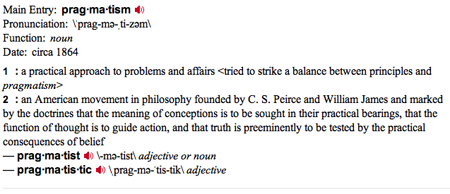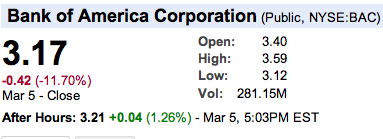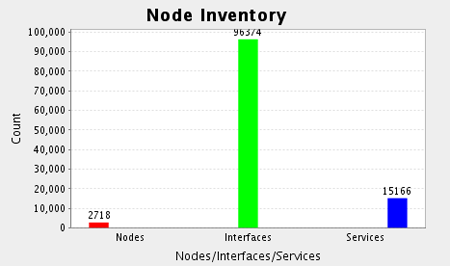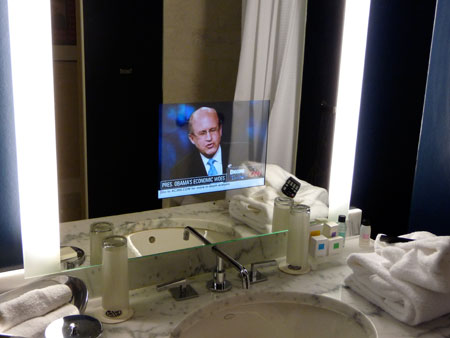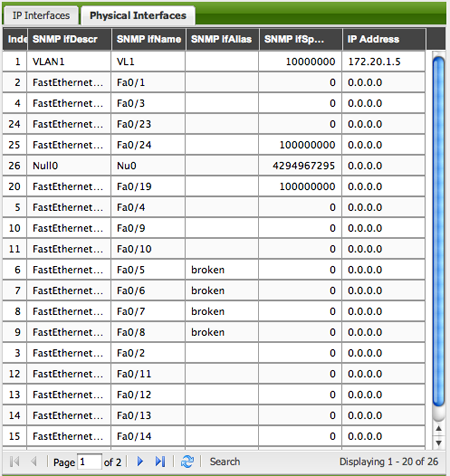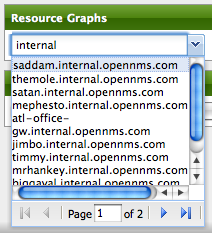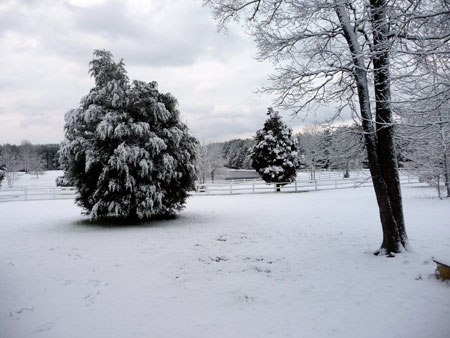It has been a rainy weekend, soon to turn to snow. If we do see a decent amount of accumulation it will be the second such storm this year, and much more normal than the last few years when we had almost no snow. Those years were also very dry so perhaps we’ll break out of this drought pattern.
So, I’ve been able to catch up on things a bit, and one of those involved an episode of CSI called “Deep Fried and Minty Fresh” [spoilers]. There is a small section of the episode about biodiesel.
In the show, the team arrives at a residence in the desert where a man is converting used fryer grease into biodiesel. The characters are portrayed as stereotypical hippies and tree huggers, which I thought was for comic relief, but one states “It only cost a couple of hundred bucks to convert my truck”. This is actually wrong – biodiesel runs fine in unmodified diesel engines – so I’m assuming the writers really didn’t do their homework and were just taking cheap shots at the long-haired weirdos.
Where I live there is a thriving biodiesel community. It’s rare that you can drive through downtown without seeing a diesel vehicle with a biodiesel sticker or homemade emblems like “bioTDI” on a Jetta or “bioturbodiesel” on a Mercedes. And while some of the people involved could easily be classified as hippies, none are as vacuous as the characters on that CSI episode.
When I asked some of them if they had seen the program I was reminded that most don’t have televisions. However, they do have computers so I wanted to take a clip from that show and send it to them, and while the episode is a couple of weeks old this was the first chance I had to edit it off of my DVR.
The character in the show that referenced modifying his truck was not talking about biodiesel but instead about Straight Vegetable Oil (SVO). It is possible to run a diesel vehicle on vegetable oil alone (biodiesel uses a chemical process called transesterification to actually change the used oil) but it does require a modification to the engine. Basically, a tank is added to the vehicle to hold the used and filtered oil, and the hot water line from the engine is routed through the tank to provide heat. The vehicle is started and run on “petrodiesel” (or “dinodiesel”, etc.) until the oil has a chance to be heated, and then a switch is thrown to send the now warmed and liquid oil into the engine. Before the end of the trip, you throw the switch back to clean everything out before stopping.
This actually might work well in the Nevada desert, but I know from the experiences of my friend Lyle Estill that it can suck around here. First of all, it gets too cold. Second, unless you take a lot of long trips you don’t have time for the “heat-run-clean” cycle. He tried it for a long time before getting tired of being left by the side of the road and he ripped the system out.
People might think that there is a world of difference between communities that have grown up around biodiesel and those around open source, but Lyle has purposely borrowed a lot of ideas from our experiences with OpenNMS. He has built a one million gallon a year plant in town to produce biofuel from waste streams, and he has shared a lot of his experiences through his Energy Blog. You can use his site and his book to learn more about the process, or you can just hire his team to consult with you about your ideas or to have them craft a reactor for your needs.
This is similar to OpenNMS. It’s free and you can download it, use it, modify it and share it, but if you need help there is a commercial organization behind it.
In thinking about these similarities I came to realize that communities, especially open communities, act to minimize risk. If I wanted to try to wean myself from a dependence on foreign oil for my transportation needs, I could look to the work that Lyle and his team have done and make decisions that would cost me far less than if I tried to explore it on my own. Heck, I can just drive down to town and purchase biodiesel directly from the co-op, and many people don’t have that option.
In much the same way, open source software helps mitigate the risk involved in choosing software. Not only can you “try it before you buy it”, you are free to modify it and you can leverage the experience of all the other users in the community to limit the problems you experience. Heck, if the organization behind the application ceased to exist you could still use and improve the product.
Commercial software doesn’t provide that value. Most of our current energy options don’t provide that value (Lyle’s group was able to provide fuel during Katrina when all the pipelines were shut down, for example). But it is possible to build communities that do.
This is really nothing new. The whole idea of “insurance” is usually based around having a big enough pool that those who use most of the resources are easily supported by the rest of the group, but I’m thinking that open communities create a much bigger pool than closed ones.
Just some more silly thoughts for a cold and rainy day.
